Editorial

Dear readers,
It is unusual to be writing an editorial in August itself which is, as for many of you, our ‘holiday’ period. So, always striving to do something different, publishing this week does allow me to stay that despite our assumption that little gets done in the summer months, in fact it seems quite the opposite, for 2018 at least. Admittedly, much of the activity stems from China, with two draft regulations on Nomenclature of Pharmaceutical Excipients and an Annex to Announcement 146 on Filings for Pharmaceutical Excipients out for consultation for which responses from industry and others are due imminently. These were sent out to our membership and while I know it’s not the best time of year to be reaching out for comments, ‘it is what it is’ and we must do our best! So thanks to those of you who were able to network these documents within your organisations so we can provide representative feedback to the China Pharmacopoeia Commission and the Center for Drug Evaluation.
And to mention China again, in July IPEC Europe attended the event organised by IPEC China, ExcipientFest Asia where our Vice Chair, Dr Frank Milek, ably presented on the topic of managing the many challenges of excipient supply chains. At the core of the key messages he delivered is how our GDP guide can help in surmounting barriers and its very rewarding to see one of IPEC’s work products, to which many of you contributed, get the attention of a broader audience. It is interesting to learn who attended this event. The regulations in China relating to excipients issued more recently explicitly spelled out that the drug manufacture is responsible for the quality of excipients among other things. No surprise then that this event attracted great interest from the domestic pharmaceutical industry, be they local or international companies. It served as a reminder to me of our unique mix of members and how important it is that we hear perspectives from each component so we can confidently claim we speak with that ‘’one voice’’.
Prior to ExcipientFest Asia, there was an IPEC Federation meeting of representatives to discuss progress on the 2018+ Strategic Plan. This will be reported in the September edition and I also wanted to mention a workshop held after Federation discussions which was attended by key stakeholders from the China Pharmacopoeia Commission, EDQM, USP and WHO. Each group presented their perspectives on pharmacopoeial harmonisation and feedback from Frank Milek indicates that the regulators’ approach to this perennial subject will allow some radical rethinking of our approach within IPEC and what we can do to influence progress in a different way. When the IPEC Europe Board meets in September, this will be high on the agenda and after that we’ll be sharing with you how the debates in China will drive our next steps. So anyone with an interest in this area, be ready to get engaged! Our surveys always tell us this is an important topic so with some new direction, it will hopefully motivate many to help us revitalise harmonisation!
I look forward to talking with you again next month but meanwhile, enjoy what remains of this outstanding summer.
Frithjof Holtz
IPEC Europe chair
Focus on co-processed excipients
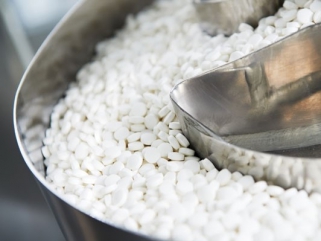
As new drug molecules are developed, including both small molecule and biologic drugs, pharmaceutical manufacturers need new excipients to increase options for formulation and delivery. However, high development costs and stringent regulatory requirements mean that few new chemical entity (NCE) excipients have reached the market in recent years.
One alternative to developing NCE excipients is to create co-processed excipients (CPEs), which provide a means whereby new excipient functionality can be introduced without the time and economic constraints relating to the introduction of novel excipients. From just a handful of examples a few years ago there are now dozens commercially available, and it’s expected that the number will continue to grow.
CPEs are a combination of two or excipients obtained by physical co-processing – for example co-drying, spray drying, granulation, extrusion, and high-shear dispersion – that does not lead to chemical change (the formation of covalent bonds), and have functionalities that are not achievable through simple blending. That could include simplified drug product manufacturing, reduced costs and improved dosage form properties such as stability. For instance, CPEs have been used in quick-dissolving oral tablets to improve the mechanical strength of the dosage form.
CPEs can provide improved functional characteristics and enhanced properties that are not achievable through simple blending, with minimal safety data burden as they are typically composed of substances already evaluated for safety. From a regulatory perspective, they should be assessed on the CPE as a whole and not as a simple blend, and risk assessment should be scientifically based and evaluated on a case-by-case basis. It is well recognised that they may require different quality controls to simple excipient mixtures, and the user of any CPE is responsible for assuring its fitness for purpose, and that the CPE and its components are manufactured to acceptable standards of good manufacturing practice (GMP).
Last year, IPEC Europe and IPEC-Americas jointly published a guide for excipient makers and users on CPEs, offering best practice advice and voluntary guidance to assist their development, manufacture and use.
The guide facilitates communication between excipient users and suppliers regarding the safety information required for regulatory filing for a product containing a novel co-processed excipient. For excipient manufacturers, it covers areas such as analytical method development, stability and safety considerations, including ‘safety bridging’ (in other words making a case for a CPE based on the safety and toxicology of the individual components) and risk analysis. For users, it looks at the CPE technical data package, regulatory and safety considerations, manufacture, fitness for purpose, and supply.
Meanwhile, IPEC has also developed an independent safety evaluation procedure for new or novel excipients that assesses safety bridging arguments to existing data in a bid to minimise the need for new safety studies.
Despite the advantages to producers, most co-processed excipients are not found in official monographs, which is holding back their use in the market. Pharmacopoeias are however working on new CPE guidance, and specifically the development of monographs for CPEs will facilitate the use of these excipients by pharmaceutical manufacturers. Among the initiatives in play, the European Directorate on the Quality of Medicines & Healthcare (EDQM) is developing a general monograph on CPEs, which it says is intended to help excipients supplier, pharma manufacturers and quality assessors work to a common definition and terminology, and define which quality controls are necessary based on the “particularities” of CPEs. The current definition in the monograph is fairly closely aligned to that used in the IPEC guide.
IPEC guide definition: “A co-processed excipient is a combination of two or more compendial or non-compendial excipients designed to physically modify their properties in a manner not achievable by simple physical mixing, and without significant chemical change. However, in some instances, formation of necessary components may occur, such as in-situ salt formation.”
EDQM proposed definition: “A co-processed excipient is any combination of 2 or more excipients, obtained by a well-defined, suitable physical process introducing intended functionalities that cannot be achieved through simple blending. If one or more excipients are added by simple blending to a co-processed excipient, the resulting product is not considered as a co-processed excipient. The composition of a co-processed excipient is defined and appropriate limits around the nominal percentage content of each component are determined based on the capability of the manufacturing process and the test method used.”
The first draft of the general monograph was developed in 2015 and revised two years later, with the second version out for public comment until the end of 2017. In particular, EDQM was seeking feedback on whether it is necessary to differentiate CPEs from simple blends and to confirm intended functionalities both during development and at batch release, or during development only.
The agency held a meeting in March to discuss that feedback and is considering the way forward – i.e. to either submit the monograph to the Ph. Eur. Commission for adoption or continue discussions on possible revisions with stakeholders. Meanwhile, the US Pharmacopeia (USP) has a guideline in place for introducing CPEs into the National Formulary but this is currently set for revision in the organization’s fiscal year 2019 work plan.
ADM joins IPEC Europe
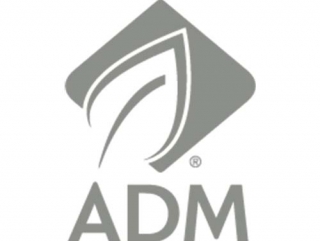
IPEC Europe is delighted to welcome Archer Daniels Midland (ADM) as a new member company this month.
For more than a century, the people of ADM has transformed crops into products that serve the vital needs of a growing world. It is one of the world’s largest agricultural processors and food ingredient providers, with approximately 31,000 employees serving customers in more than 170 countries, as well as a global value chain that includes approximately 500 crop procurement locations, 270 ingredient manufacturing facilities, and 44 innovation centers worldwide.
Last chance: 7th annual conference on pharmaceutical excipients
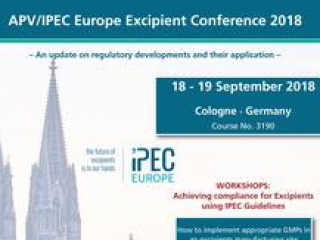
There’s still time to register for IPEC Europe and APV’s 7th annual conference on pharmaceutical excipients, which will take place on 18-19 September in Cologne, Germany.
The conference will focus on “hot topics” in the area of excipient regulation and technology.
As part of the programme we will offer three parallel workshops to provide practical, hands-on insight and discussion on regulatory topics, with a view to IPEC Guidelines providing tools to achieve compliance. These workshops will focus on implementation of GMP in an excipient manufacturing site, supplier qualification and auditing, as well as analytical data and certificates of analysis provided by suppliers of excipients.
Beyond that the regulatory session will highlight compendial topics of EDQM and USP. Challenges relating to the control of particulate contamination in excipients and requirements for excipients in parenteral applications will be presented and discussed by pharma industry experts.
The technical and scientific part of the conference will deal with the importance of excipient on drug bioavailability. Low bioavailability is most common with oral dosage forms of poorly water-soluble, slowly absorbed drugs. Lipid based drug delivery systems will be presented as they can be an approach to overcome low bioavailability.
The design of drug release from modified-release (MR) dosage forms is intentionally different from that of an immediate-release drug formulation to produce a desired therapeutic purpose or improved patient compliance. Here we will discuss a method to predict the modified release performance of drugs.
Molecules used as active drug substances can be categorised into two classes – small and large molecules. Small, chemically synthesised molecules are the conventional active substances and still constitute over 90 percent of the drugs available on the market today. Contrary to small molecules, large molecules are complex and often consist of heterogeneous mixtures; they are becoming increasingly important. We will high light the role of excipients in small/large molecule drug formulation.
New scientific findings in the molecular processes of life are advancing our knowledge of health and disease. The objective of individualised medicine is to make such knowledge useful for individually tailored prevention, diagnosis and treatment. As new drugs are elaborated that have differential effects within populations, there is also a need to consider new manufacturing methods. The requirements of excipients for individualised medicines and continuous manufacturing processes will be pointed out.
Last but not least networking and exchange of information is a key feature of the event and table-top exhibitions aligned to the conference will encourage communication between suppliers and users.
More information on the programme & registration here.
IPEC Europe calendar

| Group |
Q3/4 2018 |
| IPEC Europe Board |
12 September, 27 November |
| GDP Committee |
28-29 August (Brussels), 29-30 October (Germany) |
| Pharmacopoeial Review & Harmonisation Committee |
TBC |
| Quality/Regulatory Affairs Committee |
26 September (telecon), 28 November |
|
|
|
What's new in the field of excipients in China? EDQM workshop has the answers.

The European Directorate for the Quality of Medicines & HealthCare (EDQM) is organising a workshop on 18 September – entitled What’s new in the field of excipients in China? – in collaboration with the Pharmacopoeia of the People’s Republic of China (ChP).
“Quality of pharmaceutical excipients is a hot topic for regulators worldwide,” EDQM director Dr Susanne Keitel told Excipients Insight. “There have been a number of significant and fundamental changes to the way excipients are regulated in China, and the purpose of this joint workshop is to provide some insights into [these] evolving regulatory requirements.”
The ChP has significantly increased the number of monographs covering excipients and it is important for stakeholders intending to do business in China to understand how these monographs are elaborated and what the future plans of the ChP are in this field, she continued.
This workshop will provide users and representatives from the industry with a unique opportunity to interact with key, high-ranking ChP officials, including Wei Zhang, Secretary General, of the ChP Commission, and to learn more from these leading experts on the technical and regulatory requirements applicable in China. The workshop programme also allows plenty of opportunities for discussions, questions and networking.
The event will cover topics such as:
- The implementation of various examination and approval systems;
- How standards for pharmaceutical excipients in the ChP are established;
- Risk management, technical requirements and the applicability of excipients;
- The requirements to be met for the declaration of technical materials; and
- The quality control of excipients produced by different sources such as animals and plants.
“Harmonisation of pharmacopoeial monographs as such is of great importance for the globally acting industry,” said Keitel. “This is why we are particularly happy to collaborate with the ChP, for example in organising such workshops or collaborating with them at the level of the International Meetings of World Pharmacopoeias.”
“Providing safe, effective and good quality medicines and active pharmaceutical ingredients is a major concern all over the world. Hence, collaboration across international borders has become even more essential if we are to keep abreast of advances in science and share expertise and resources.“
The workshop is aimed at national regulatory bodies and professionals working in pharmaceutical companies in quality control, development, manufacturing, and regulatory affairs in the field of pharmaceutical excipients. It is also expected to attract many Chinese and international excipient and finished-drug manufacturers.
This isn’t the first time that the EDQM has organised events to facilitate exchanges of information with stakeholders and to promote co-operation with authorities worldwide. For example, it co-organised a workshop with the Indian Pharmacopoeia Commission (IPC) in Mumbai earlier this year which provided the opportunity to have an open exchange with Indian stakeholders.
“We have agreed with the IPC to hold a similar workshop in Europe next week to provide European stakeholders with a platform to interact directly with them,” said Keitel.
If you cannot make it to Strasbourg, you can register for the live broadcast to view this workshop remotely. In addition, you will be able to submit your questions online throughout the day.
EMA cuts operations as Brexit staff losses exceed expectations

The EMA is temporarily scaling back its activities in order to accommodate higher-than-expected staff attrition ahead of its move from London to Amsterdam.
The agency says the suspension of some non-urgent activities will allow it to keep essential services running as it faces the loss of around a third of its headcount.
“It has become clear that the agency will lose more staff than initially anticipated,” said the EMA in a statement, adding that “this trend is expected to accelerate” as the date for the relocation approaches. It’s also concerned about the situation after the move, saying there is a “high degree of uncertainty on mid-term staff retention.”
From 1 October, the EMA will reduce international collaborations in order to focus on critical areas such as product evaluation and supervision and supply-chain integrity. It will take a reactive stance on less urgent matters such as harmonisation and antimicrobial resistance, which will be considered on a case-by-case basis.
Guidelines development will also be confined to urgent areas, such as Brexit itself or public health emergencies, and non-essential working party activities will be curtailed. The agency says it also won’t attend stakeholder meetings that are not related to Brexit or the agency’s relocation.
The EMA is moving to its new location next year as a consequence of the UK’s exit from the EU, which takes place on 29 March 2019. The final home for the agency won’t be ready for some months, however, and staff will initially occupy temporary premises in the city.
The reduced activities will help maintain essential public health activities and “allows for training of EMA staff who will be re-assigned to new duties ahead of the peak relocation time which will start in early 2019,” according to the regulator.
Meanwhile, the UK has formally requested to remain a part of the EMA in the much-anticipated white paper published by Theresa May’s government in June that set out the proposed terms of the future relationship between the UK and EU.
The aspiration, however, is somewhat lacking in detail, with the UK suggesting that the Medicines & Healthcare products Regulatory Agency (MHRA) should remain an “active participant” in the EMA and still able to “conduct technical work, including acting as a ‘leading authority’ for the assessment of medicines, and participating in other activities like ongoing safety monitoring and the incoming clinical trials framework.”
Brexit talks resume, but with just a few months to go there have been warnings from both the UK and EU that preparations should be stepped up for a no-deal scenario. UK Prime Minister Theresa May has said she will take the lead on talks with the EU, a move seen by some as undermining the position of newly-appointed Secretary of State for Exiting the EU Dominic Raab, who was named to the post following the resignation of David Davis.
In the meantime, the EMA has also published two updated documents on the UK withdrawal from the EU, including an updated Questions & Answers document (and a new version of its practical guidance for procedures related to Brexit.
MHRA moves to Canary Wharf
On 18 June, the UK Medicines and Healthcare products Regulatory Agency (MHRA) moved out of its former location in Victoria to a new office in Canary Wharf. The relocation follows the establishment in 2016, announced by the Cabinet Office, of a new government hub for more than 5,000 civil and public servants in East London. The centres moving include: the MHRA regulatory centre, including the British Pharmacopoeia (BP), and the Clinical Practice Research Datalink (CPRD).
CMDh rules on hydroxyethyl starch solution safety
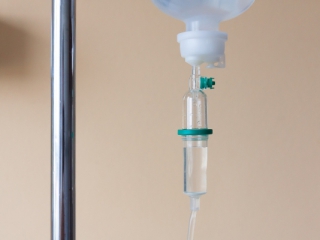
The Coordination Group for Mutual Recognition and Decentralised Procedures - Human (CMDh) – part of the Heads of Medicines Agencies – has concluded after a review that hydroxyethyl starch (HES) solutions for infusion should remain on the market.
The decision relies on the implementation of a combination of additional measures to protect patients, including training, controlled access and warnings on the packaging.
While the measures focus on the use of HES as a plasma volume expander rather than as an excipient, it is of potential interest to both users and suppliers of HES as it could have an impact on registration and supply chain for this type of medicinal product.
HES solutions for infusion are used to replace plasma volume following acute blood loss, where treatment with alternative products known as ‘crystalloids’ alone is not considered sufficient.
In January, the EMA’s safety committee recommended suspending the marketing authorisations of these medicines because they continued to be used in critically ill patients and patients with sepsis despite restrictions introduced in 2013 due to the risk of kidney injury and death in these patients.
EFSA says it does not need to reopen opinion on TiO2 safety
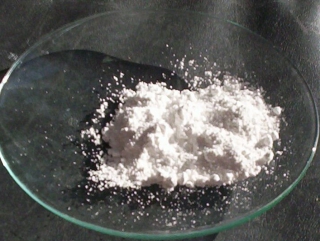
In May, France’s National Assembly passed an amendment banning the use, import and marketing of any food product containing titanium dioxide (TiO2) as a food additive.
The amendment was passed as a component of France’s farm and food bill and as a consequence some food and confectionary manufacturers have already pledged to phase out the use of TiO2 by 2020. The final vote on the law was due as this edition of Excipients Insight went to press.
The debate about the safety of the ingredient, which is also used in pharmaceutical preparations as an excipient, stems from a 2017 French scientific study highlighted the potential carcinogen risks of nanoparticles of Ti02. However, the European Food Safety Authority (EFSA) stated in 2016 that Ti02 poses no health concerns – a position that it reiterated in July after being requested by the European Commission to look again into the data available on the ingredient.
“Altogether, the panel concluded that the outcome of the four studies did not merit re-opening the existing opinion of EFSA related to the safety of TiO2 (E 171) as a food additive,” says the EFSA in its report.
The assessors “considered that the four studies evaluated, highlighted some concerns but with uncertainties, therefore their relevance for the risk assessment was considered limited and further research would be needed to decrease the level of uncertainties.”
Work starts on ICH Q13 Continuous Manufacturing
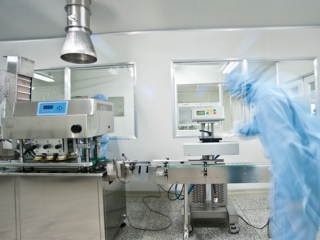
At its meeting in Kobe, Japan, in June, the International Council for Harmonisation (ICH) agreed to start work on Guideline ICH Q13, intended to support support the introduction of continuous manufacturing into the pharmaceutical industry.
Work will now begin on developing formal concept papers and work plans, according to ICH, which has estimated that Q13 will take around three years to develop.
For decades, pharmaceuticals have been produced using batch manufacturing, a multi-step and often lengthy process. Recent advances in manufacturing technology have prompted the industry to consider moving away from batch manufacturing to a faster, more efficient process known as continuous manufacturing.
The transition to continuous manufacturing is still in its early stages, in part because start-up costs can be high, and for certain types of drugs such as biologics the technology to make them in this way is still in its infancy or absent. ICH hopes to help develop a set of harmonised definitions and scientific and regulatory concepts to help accelerate the shift. The pay off could be lower cost, faster production, higher quality and speed to market for medicines.
EU, Japan expand MRA on inspections
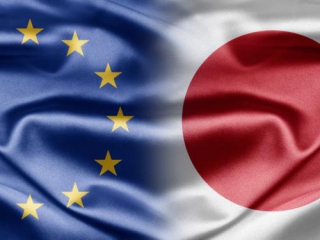
The EU and Japan have agreed to broaden the range of medicines for which they will recognise each other’s inspections of manufacturing sites.
The current mutual recognition agreement (MRA) between the two territories has been operational since 2004, and allows regulators to rely on good manufacturing practice (GMP) inspections in each other’s jurisdiction, to waive batch testing of medicines that enter Japan from EU countries and vice versa and to share information on inspections and quality defects.
The scope of the MRA has now been extended to include sterile medicines, certain biological medicines including vaccines and immunologicals, and active pharmaceutical ingredients (APIs) of any medicine covered in the agreement. More information is available here.
Recommended reading

Reinforced EU/US collaboration on medicines
Senior officials from the European Commission, the European Medicines Agency (EMA) and the US Food and Drug Administration (FDA) held their 2018 bilateral meeting in Brussels, Belgium, on 18 and 19 June. The two-day bilateral regulatory dialogue allowed the strategic partners to review their ongoing cooperative initiatives, discuss strategic priorities for the coming years and further strengthen the continuous close collaboration with specific action in the field of pharmaceuticals. Topics discussed at the 18-19 June meeting included the EU-US mutual recognition agreement (MRA) on pharmaceutical inspections on good manufacturing practices ('GMP') which came into operation in November 2017.
EMA press release
French agency confirms ‘good quality’ of Levothyrox
The French national regulator L’Agence du Medicament (ANSM) has confirmed the “good quality” of the new and controversial formulation of thyroid drug Levothyrox, in an ongoing row over its effectiveness.
Le Figaro
Multiparticulate formulation strategies for paediatric drugs
Getting children to take their medication is an age-old challenge. It’s not a spoonful of sugar, but effective formulation strategies, that offer the solution. Formulation acceptability has become a key criterion for developing new drugs that ensure patient compliance.
PharmTech.com
Are PET bottles safe for medicines? Yes, says a government study
National Institute of Nutrition has found that PET bottles are not ‘leaching toxins’ into medicines as anticipated
LiveMint.com
Nanocage discovery opens door to the delivery of sensitive drugs
Researchers have discovered self-assembling, nanoscale silica cages that could deliver sensitive drugs to their targets.
In-PharmaTechnologist.com
Selecting excipients for controlled release
With the right excipients, formulators can control when, where, and how an API is released.
PharmTech.com
Taking the holistic approach to solid dose solutions
Pingyun Chen, PhD, director of Early Development at Catalent Pharma Solutions, details some of the important considerations required in product development and how a holistic approach can help save money and time in the long run.
European Pharmaceutical Manufacturer
Significant step taken towards insulin pill
Researchers from Harvard University have developed an insulin formulation using two ionic liquids they say could lead to the development of a pill for diabetics.
In-PharmaTechnologist.com
Trehalose: A novel treatment for dry eye
Excipient is being trialled as both a bioprotectant and an osmoprotectant.
Healio.com
Events Calendar

Here is a round-up of forthcoming events of interest to suppliers and users of excipients. Please let the IPEC Europe Secretariat know if we've missed one.
10th EuPFI Conference
London, UK - 11-13 September, 2018
More information here.
EDQM workshop - What’s new in the field of excipients in China?
Strasbourg, France - 18 September, 2018
More information here.
APV/IPEC Europe Excipient Conference 2018
Cologne, Germany - 18-19 September, 2018
More information here.
CPhI Worldwide
Madrid, Spain - 9-11 October, 2018
More information here.
|